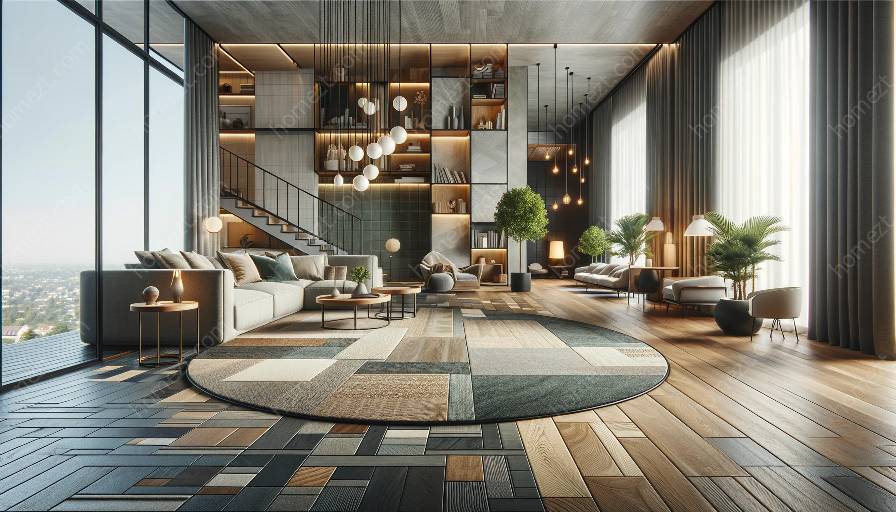When it comes to interior design, the flooring choices you make can have a significant impact on the natural light in a room. Whether you're looking to brighten up a space or create a cozy atmosphere, understanding the relationship between flooring and natural light is crucial. In this topic cluster, we'll explore how different flooring options can affect the amount of natural light in a room and how to make the best flooring choices to enhance both the light and design of a space.
Understanding the Importance of Natural Light
Natural light plays a crucial role in the overall ambiance and functionality of a room. It has the power to make a space feel larger, more inviting, and visually appealing. Additionally, exposure to natural light has been linked to improved mood, productivity, and overall well-being. Therefore, maximizing natural light should be a key consideration when designing or redecorating a space.
The Impact of Flooring Choices on Natural Light
Choosing the right flooring can either enhance or hinder the amount of natural light a room receives. The color, material, and finish of the flooring all play a significant role in how light is reflected and absorbed within a space. Lighter-colored floors, such as pale wood, light-colored tile, or white-washed laminate, have the ability to reflect natural light, making the room appear brighter and more spacious. On the other hand, darker floors, like mahogany, cherry, or dark tile, can absorb light, resulting in a more subdued and cozy atmosphere.
In addition to color, the type of flooring material can also affect the amount of natural light in a room. For example, glossy or high-gloss finishes on hardwood floors can reflect light and create a more luminous environment. Similarly, smooth and polished surfaces in stone or tile flooring can have a similar effect. However, matte finishes and textured surfaces tend to absorb light, which can impact the overall brightness of a room.
Optimizing Natural Light Through Flooring Choices
When selecting flooring for a space, it's important to consider the room's orientation in relation to the sun's path throughout the day. Rooms that receive ample natural light can benefit from a wider range of flooring options, while spaces with limited natural light may require more strategic choices to maximize brightness.
For rooms with excellent natural light exposure, light-colored and reflective flooring materials can amplify the brightness and contribute to an airy, open feel. Opting for materials with a high-gloss or polished finish can further enhance the light-reflective properties. Additionally, avoiding heavy patterns or dark veining in stone or tile flooring can help maintain a sense of lightness and spaciousness within the room.
In contrast, rooms with limited natural light can benefit from flooring choices that help maximize the available light. Light-colored, matte-finished flooring can help mitigate the lack of natural light by brightening the space and creating a sense of openness. Additionally, strategically placing mirrors or light-reflective decor can further amplify the effects of natural light in these areas.
Making Informed Flooring Decisions for Natural Light and Design
When making flooring decisions with natural light in mind, it's essential to strike a balance between aesthetics and functionality. Consider the overall design and color scheme of the room, as well as the desired atmosphere and amount of natural light. Flooring should complement the room's decor while also contributing to an optimal environment for both aesthetics and well-being.
For rooms that receive abundant natural light, exploring options like light wood flooring, pale-colored tile, or reflective surfaces can help create a bright and inviting atmosphere. Incorporating area rugs or carpeting in lighter shades can add warmth and texture while maintaining the room's luminous quality.
In spaces with limited natural light, look for flooring options that can help brighten the room without compromising on style. Light-colored, low-sheen flooring materials, such as light oak or ash hardwood, can infuse the space with a sense of lightness. Additionally, choosing flooring with subtle variations in color and texture can add visual interest without overpowering the room with darkness.
Enhancing Natural Light Through Strategic Decor
While flooring choices play a significant role in natural light, strategic decor and design elements can further amplify the effects of light within a room. Incorporating mirrors, translucent window treatments, and light-reflective accessories can help bounce light around the space, creating a brighter and more open atmosphere.
Area rugs and carpets can also contribute to the overall light levels in a room. Opt for rugs with lighter hues or translucent materials that allow light to pass through, maintaining the sense of spaciousness and brightness. Additionally, incorporating sheer, light-filtering curtains and blinds can provide privacy without completely obstructing natural light from entering the room.
Conclusion
Understanding the impact of flooring choices on natural light is essential for creating a well-designed and inviting space. By considering the color, material, and finish of flooring options, you can harness the power of natural light to enhance the ambiance and functionality of a room. Whether you're working with abundant natural light or seeking to brighten a dimly lit space, making informed flooring decisions can transform the way light interacts with your environment and contribute to a more visually appealing and comfortable home.






































